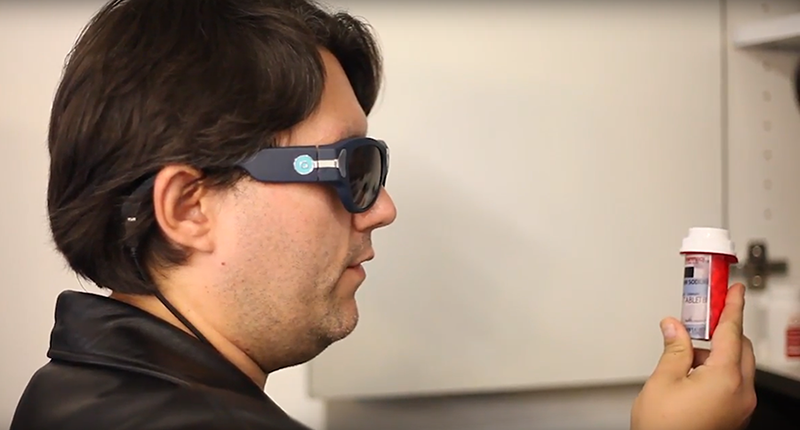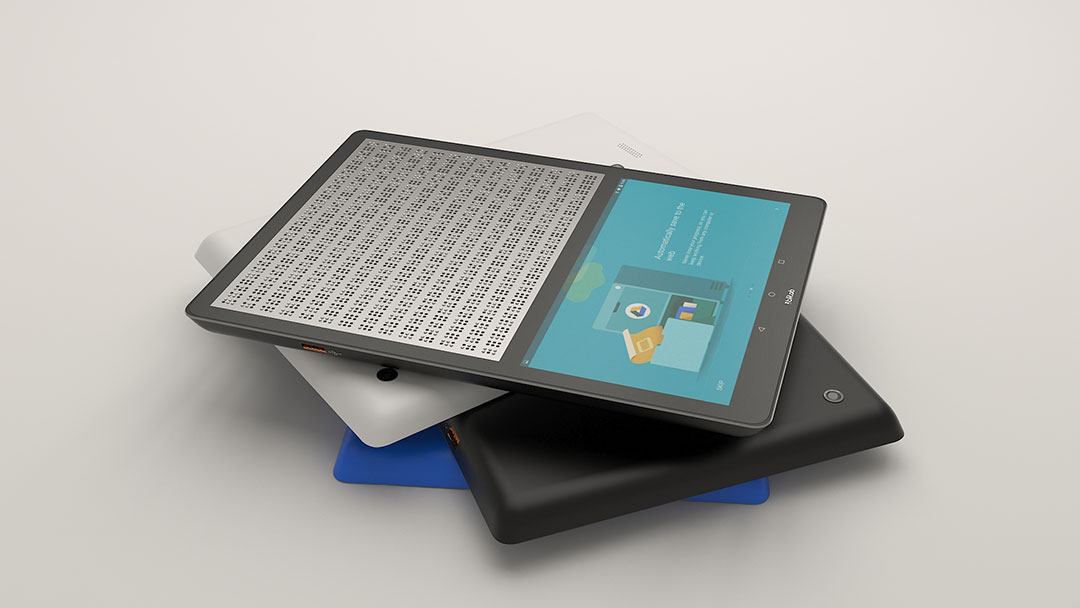AI-Powered Visual Aids: Enhancing Self-Reliance for Blind Users
AI-Powered Visual Aids: Enhancing Self-Reliance for Blind Users
Blog Article
Discover Innovative Tools Made for the Aesthetically Damaged
The advancement of innovative tools for the aesthetically damaged represents a significant development in ease of access and freedom. Technologies such as wise glasses with AI capacities and mobile applications made to offer auditory summaries are reshaping daily experiences for individuals.
Smart Glasses for Navigation

Smart glasses made for navigating are transforming the means aesthetically impaired individuals engage with their atmosphere. These sophisticated tools utilize a combination of cam innovation, expert system, and auditory responses to offer real-time information about surroundings. By using barrier discovery systems, smart glasses can signal users to potential risks, allowing much safer flexibility in both acquainted and strange setups.
The integration of GPS innovation additionally boosts navigation abilities, permitting users to receive auditory instructions as they move. This hands-free method not just cultivates self-reliance yet additionally equips aesthetically impaired individuals to navigate metropolitan landscapes with raised confidence. Furthermore, lots of clever glasses are outfitted with features that determine sites and street indications, supplying contextual info that enhances the user experience.
Moreover, the growth of these tools is consistently progressing, with firms functioning to enhance the precision of item recognition and expand the variety of navigational features. As wise glasses become extra available and cost effective, they hold the prospective to dramatically transform life for visually impaired users. Inevitably, these innovative devices represent an important action towards inclusivity, offering improved mobility and a higher feeling of freedom for people navigating the world around them.

Mobile Application for Daily Living
Exactly how can mobile applications improve the lives of visually damaged individuals? Mobile applications are changing the method visually impaired users navigate their environments, manage daily jobs, and access info. These applications supply vital support with numerous performances, promoting self-reliance and enhancing lifestyle.
A number of cutting-edge mobile apps are made specifically for daily living. Applications like Be My Eyes link aesthetically damaged individuals with sighted volunteers via video clip phone calls, enabling them to get real-time support with tasks such as checking out tags or browsing unfamiliar areas. In A Similar Way, Seeing AI, established by Microsoft, uses expert system to define surroundings, checked out message, and recognize items, successfully transforming a smartphone into a powerful device for daily assistance.
Furthermore, navigating applications customized for the visually damaged, such as Aira and BlindSquare, use audio-based directions and environmental information, enabling customers to traverse their environments safely and with confidence. Past navigation and prompt aid, mobile applications likewise sustain organization and task monitoring, with functions that aid customers establish reminders, create to-do lists, and track visits. In recap, mobile applications work as crucial resources, equipping aesthetically damaged people to lead more independent and satisfying lives.
Wearable Technologies for Aid
Empowerment through innovation is significantly noticeable in the realm of wearable devices developed to help aesthetically impaired people. These innovative devices incorporate effortlessly right into day-to-day life, boosting navigating and offering crucial comments to users. Wise glasses geared up with video cameras can identify faces and review message aloud, enabling customers to communicate more confidently in professional and social setups.
Another notable advancement is making use of haptic responses systems in wearable devices. These systems make use of resonances or other tactile signals to communicate information concerning the individual's setting, such as obstacles or changes in terrain, improving movement and safety. Wearable innovations additionally include wristbands that attach to mobile phones, notifying users to notices through other refined resonances, thus improving connection without reliance on visual hints.
As these modern technologies remain to advance, they are not just enhancing self-reliance for visually damaged individuals however also cultivating a better sense of inclusion in culture. By linking the void in between difficulties faced in daily living and the possibility for freedom, wearable technologies function as critical devices read this article in the mission for equality and empowerment for those with aesthetic disabilities.
Audio Description Devices
Audio summary tools play a vital role in improving ease of access for aesthetically impaired individuals, giving them with the capacity to involve with aesthetic media. Smart glasses for the visually impaired. These tools supply narrated descriptions of essential aesthetic aspects in movies, television shows, and live efficiencies, guaranteeing that users can completely understand the context and feelings shared via visuals
Sound description can be integrated right into numerous platforms, including streaming services, cinema screenings, and live theater. Several prominent streaming solutions now include audio description as an availability function, enabling audiences to choose it quickly. Along with traditional media, specialized applications also exist, providing audio summaries for art exhibits, galleries, and other social events.
The effectiveness of audio summary pivots on the skill of the storytellers, that have to convey visual information succinctly without interfering with the initial audio. Developments in this area are likewise paving the means for more tailored experiences, where users can readjust the degree of information and pacing according to their choices.
Braille Innovations and Gadgets
Braille innovations and tools have dramatically transformed the way visually damaged people engage with message and information. Modern innovations have actually led to the growth of functional tools that enhance proficiency and independence among individuals.
Moreover, mobile Braille notetakers combine conventional Braille input with modern functionalities, assisting in note-taking, scheduling, and file modifying on the move. Speech-to-text devices for low vision. These portable devices frequently include text-to-speech capacities, connecting the void in between Braille and auditory information
Furthermore, cutting-edge Braille printers have arised, allowing customers to create Braille labels, files, and instructional products efficiently. This accessibility promotes higher participation in academic and expert environments, inevitably promoting inclusivity.
Moreover, research study right into smart Braille modern technologies remains to expand. Instruments that include expert system are being explored to give real-time navigation aid and contextual details, improving the individual experience in varied settings. In general, these innovations show a commitment to empowering aesthetically damaged individuals through innovation, guaranteeing they can quickly accessibility and engage with the globe around them.

Final Thought
The innovation of innovative tools for the visually damaged significantly improves self-reliance and top quality of life. Smart glasses, mobile applications, wearable innovations, audio summary tools, and her response Braille developments collectively equip individuals by providing crucial navigating support, environmental understanding, and boosted reading experiences. These modern technologies not just foster better inclusion however likewise promote freedom in daily tasks, inevitably adding to a much more equitable and obtainable society for visually impaired individuals. Proceeded advancement in this area holds pledge for further improvements.
As smart glasses become more affordable and available, they hold the possible to considerably change day-to-day life for aesthetically damaged users. Mobile apps are changing the way aesthetically impaired users navigate their settings, handle daily tasks, and accessibility information. Applications like Be My Eyes connect visually damaged individuals with sighted volunteers by means of video clip telephone calls, permitting them to get real-time assistance with tasks such as checking out labels or navigating unknown spaces.Additionally, navigating apps customized for the visually impaired, such as Aira and BlindSquare, offer audio-based directions and ecological details, allowing users to traverse their environments securely and with confidence.The development of ingenious devices for the visually damaged substantially boosts independence and high quality of life.
Report this page